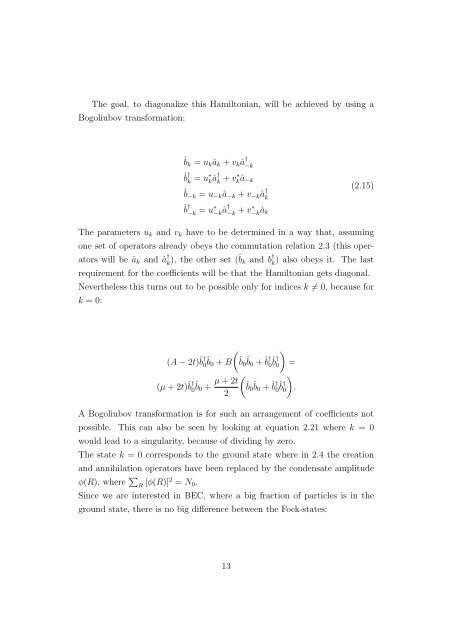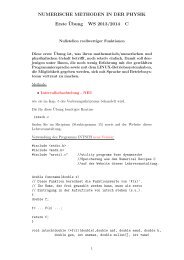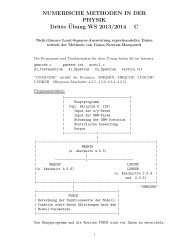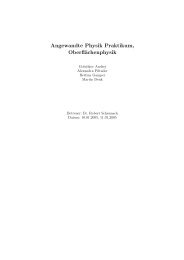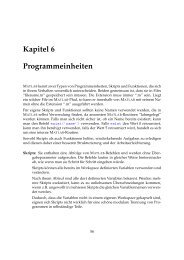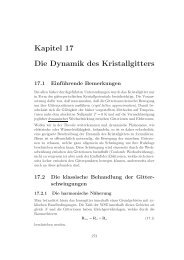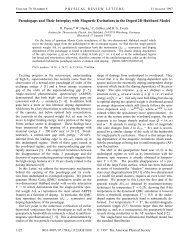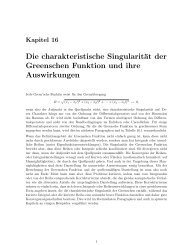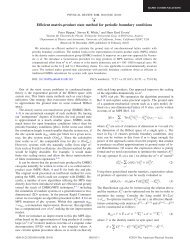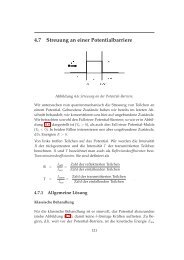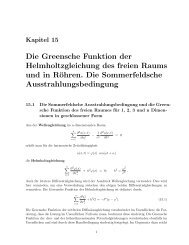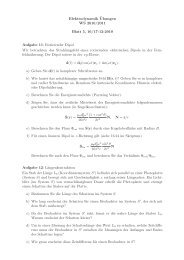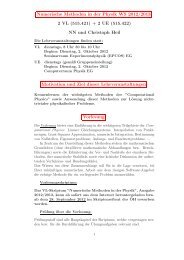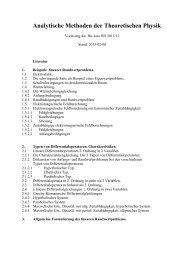Projektpraktikum - TU Graz - Institut für Theoretische Physik ...
Projektpraktikum - TU Graz - Institut für Theoretische Physik ...
Projektpraktikum - TU Graz - Institut für Theoretische Physik ...
Create successful ePaper yourself
Turn your PDF publications into a flip-book with our unique Google optimized e-Paper software.
The goal, to diagonalize this Hamiltonian, will be achieved by using a<br />
Bogoliubov transformation:<br />
ˆbk = ukâk + vkâ †<br />
−k<br />
ˆ† b k = u∗kâ †<br />
k + v∗ kâ−k<br />
ˆb−k = u−kâ−k + v−kâ †<br />
k<br />
ˆ† b −k = u∗−kâ †<br />
−k + v∗ −kâk<br />
(2.15)<br />
The parameters uk and vk have to be determined in a way that, assuming<br />
one set of operators already obeys the commutation relation 2.3 (this operators<br />
will be âk and â †<br />
) also obeys it. The last<br />
k ), the other set (ˆbk and b †<br />
k<br />
requirement for the coefficients will be that the Hamiltonian gets diagonal.<br />
Nevertheless this turns out to be possible only for indices k = 0, because for<br />
k = 0:<br />
(A − 2t) ˆb †<br />
0 ˆ <br />
b0 + B ˆb0 ˆb0 + ˆb †<br />
0 ˆb †<br />
<br />
0<br />
(µ + 2t) ˆ b †<br />
0 ˆ b0 +<br />
µ + 2t<br />
2<br />
=<br />
<br />
ˆb0 ˆb0 + ˆb †<br />
0 ˆb †<br />
<br />
0 .<br />
A Bogoliubov transformation is for such an arrangement of coefficients not<br />
possible. This can also be seen by looking at equation 2.21 where k = 0<br />
would lead to a singularity, because of dividing by zero.<br />
The state k = 0 corresponds to the ground state where in 2.4 the creation<br />
and annihilation operators have been replaced by the condensate amplitude<br />
φ(R), where <br />
R |φ(R)|2 = N0.<br />
Since we are interested in BEC, where a big fraction of particles is in the<br />
ground state, there is no big difference between the Fock-states:<br />
13


